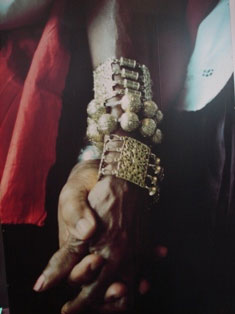“The exposition of Afro Brasil Museum patrimony intends to tell another Brazilian story(...) it means to deconstruct the black population’s imaginary, being essentially built up under the eyes of inferiority throughout history and transform it into an imaginary established on strength, equality and belonging, thus reassuring the respect for the population which is the basis of the Brazilian culture”.
With more than 6000 masterpieces, sculptures, engravings, documents and ethnological pieces from Brazilian and foreign authors, produced since the 15th century, the patrimony covers several faces of the African, Brazilian and Afro-Brazilian cultural universes. Nowadays, it is divided into 6 nuclei: Africa: diversity and persistence; Work and Slavery; Afro-Brazilian religions; The sacred and the profane; History and Memory; Visual Arts: The Afro-Brazilian touch.
África
It is a nucleus dedicated to the cultural, historical and artistic richness of the African people. It includes elements of a great variety of functions and aesthetic concepts showing the tremendous technical capacity of the authors and the diversity of this continent. Here we have masks and little statues on wood, bronze and ivory, garments lined in gold – all of them coming from different countries and cultural groups as Attie (The Ivory Coast), Bamileque (Cameroon), Luba (Democratic Republic of Congo), Tchokwe (Angola) e Ioruba (Nigeria).
Work and slavery
This nucleus focuses on the knowledge and technological development brought by the enslaved Africans and their descendants. Either in the rural or urban environment the knowledge of the Africans was essential to the economic development. Besides the paintings, engravings and sculptures depicting part of this contribution, the visitors can appreciate documents and other objects regarding the slavery work life, such as: sugar cane mill, sugar loaf moulds carpenters’ and blacksmiths’ tools.
.
Afro-Brazilian Religions
This nucleus is dedicated to religions and Brazilian rituals grounded on Africa.World views and mythologies are emphasized through a rich iconography about saints, orixás and other entities worshipped in Brazil. Visitors can also have the pleasure of observing garments of Egungun and orixás as well as musical instruments, paintings, engravings, sculptures and photos dedicated to this theme.
The Sacred and the Profane
This nucleus presents some festivities celebrated in Brazil, regarding the sacred and celebrated on the streets. Many of the Brazilian festivities such as the Congada and Maracatu report on the colonial period and were considered social spaces taken by the slaves in order to celebrate their traditions and keep their cultural identities. Being so, in several Brazilian festivities it is possible to find musical instruments from African origin, symbols related to ancient realms of the continent materialized in masks, flags and garments.
History and Memory
This nucleus is dedicated to the History and memory of some black personalities who stood out in different areas since the colonial period until today. Photos and documents praise the trajectory of writers like Carolina Maria de Jesus, author of the book “Quarto de desejo”; engineers of Rebouças family, besides other remarkable ones like Teodoro Sampaio, an important geographer and architect whose name was attributed to a well-known street in São Paulo.
Visual Arts: The Afro-Brazilian touch
This nucleus exposes Brazilian art from different periods: from Baroque and Rococo, going through the 19th century, the academic art as well as the popular, modern and contemporary art. Among some important artists we have Estevão Roberto da Silva and the contemporaneous artists Rosana Paulino, Rubem Valentim, Mestre Didi, among others. There are also creations of African and Afro-American artists like Gerard Quenum, Zinkpé and Melvin Edwards.

Adenor Gondim
Series Brotherhood of Our Lady of the Good Death
Photography - 1990s